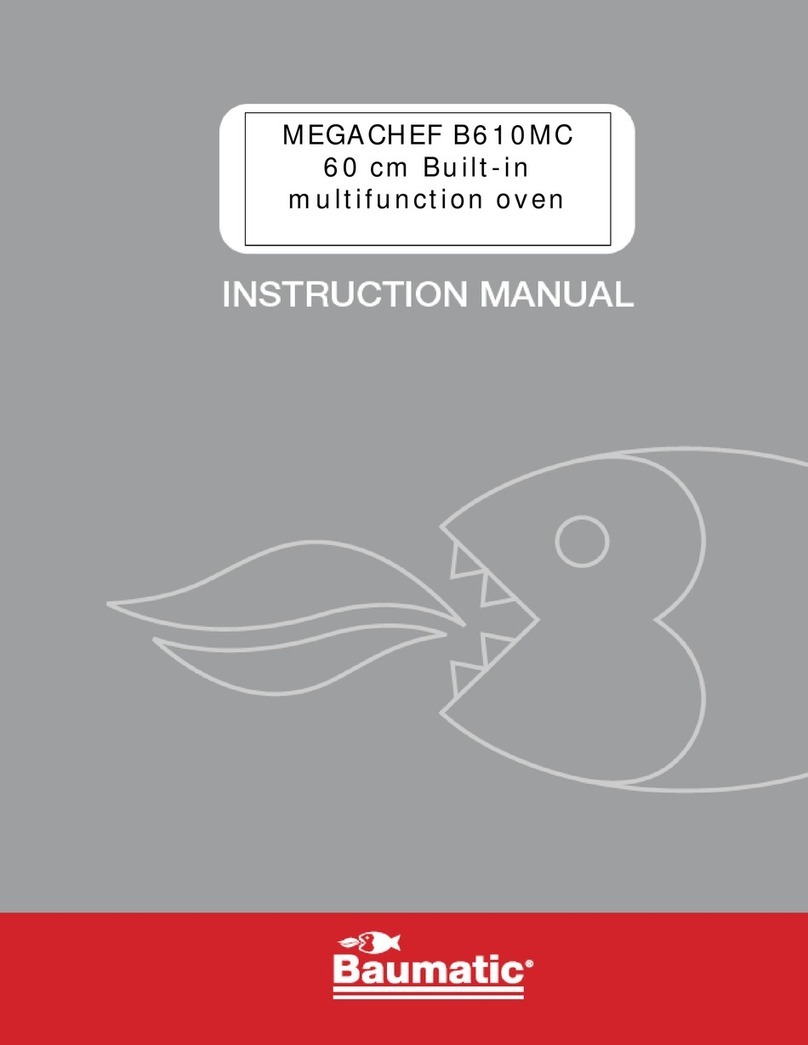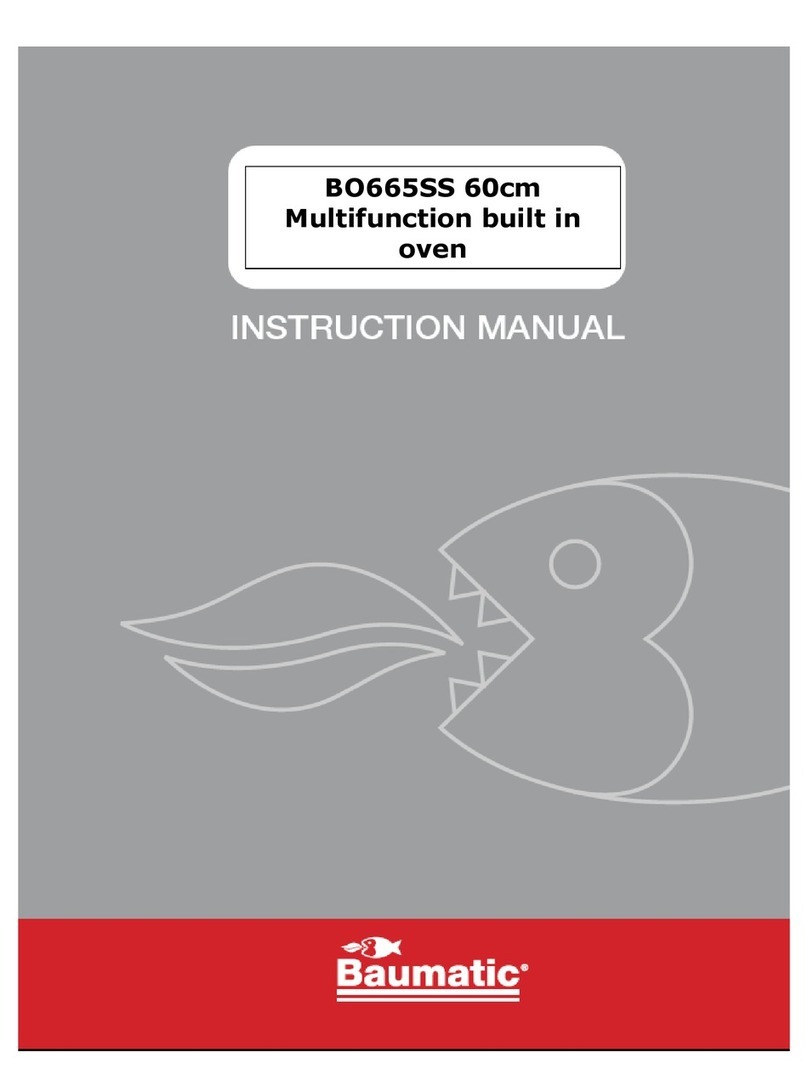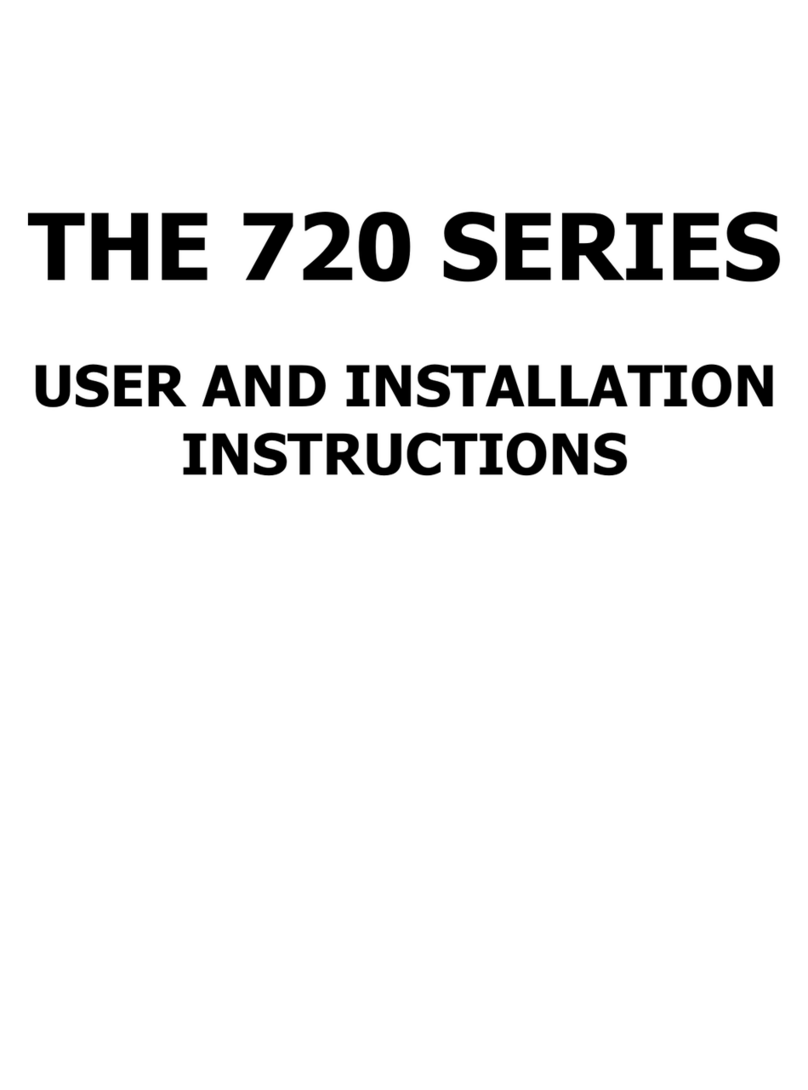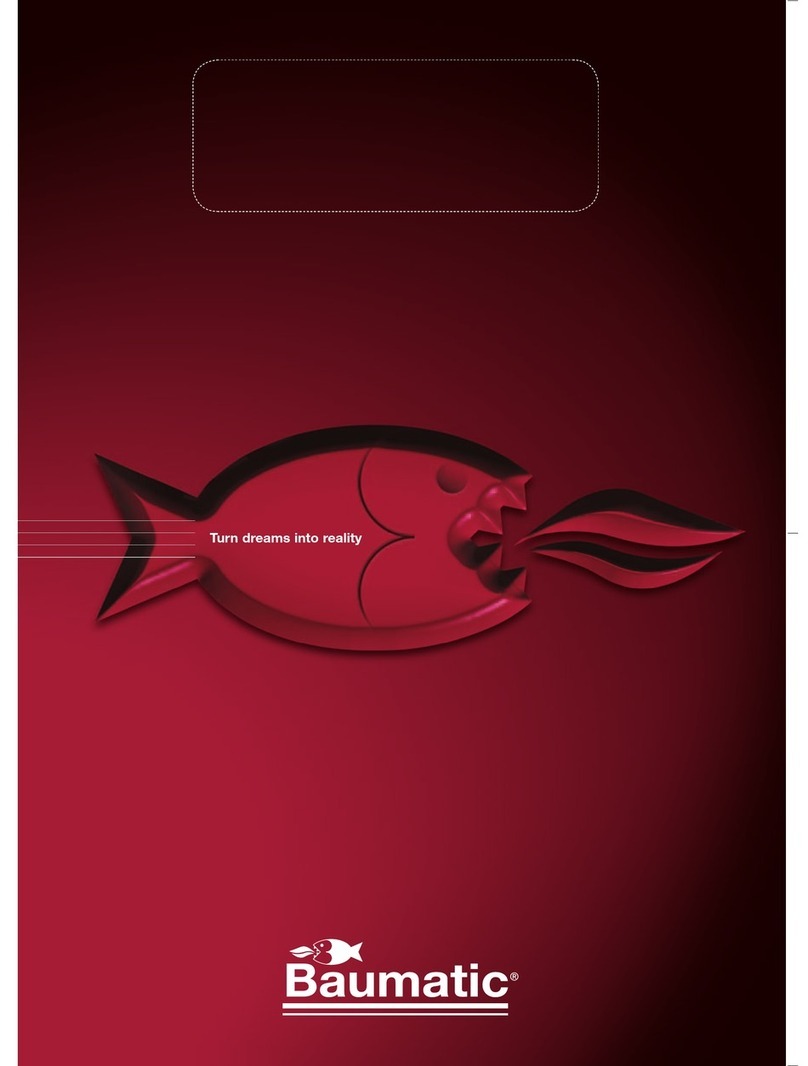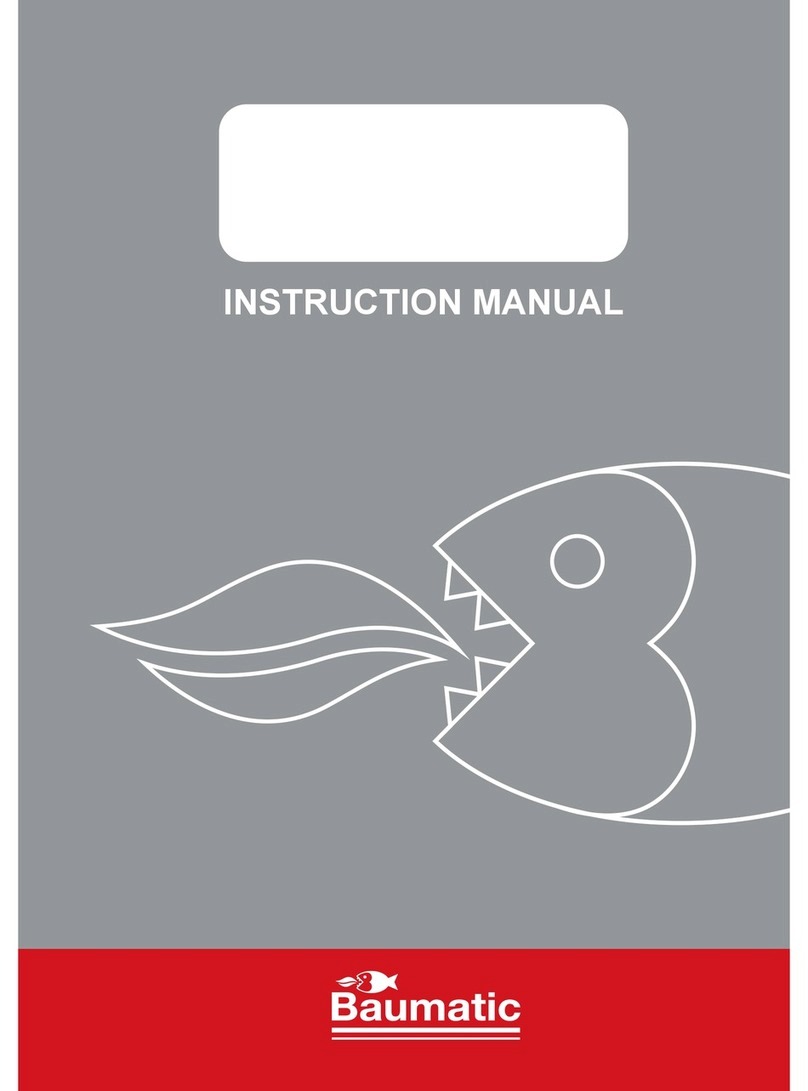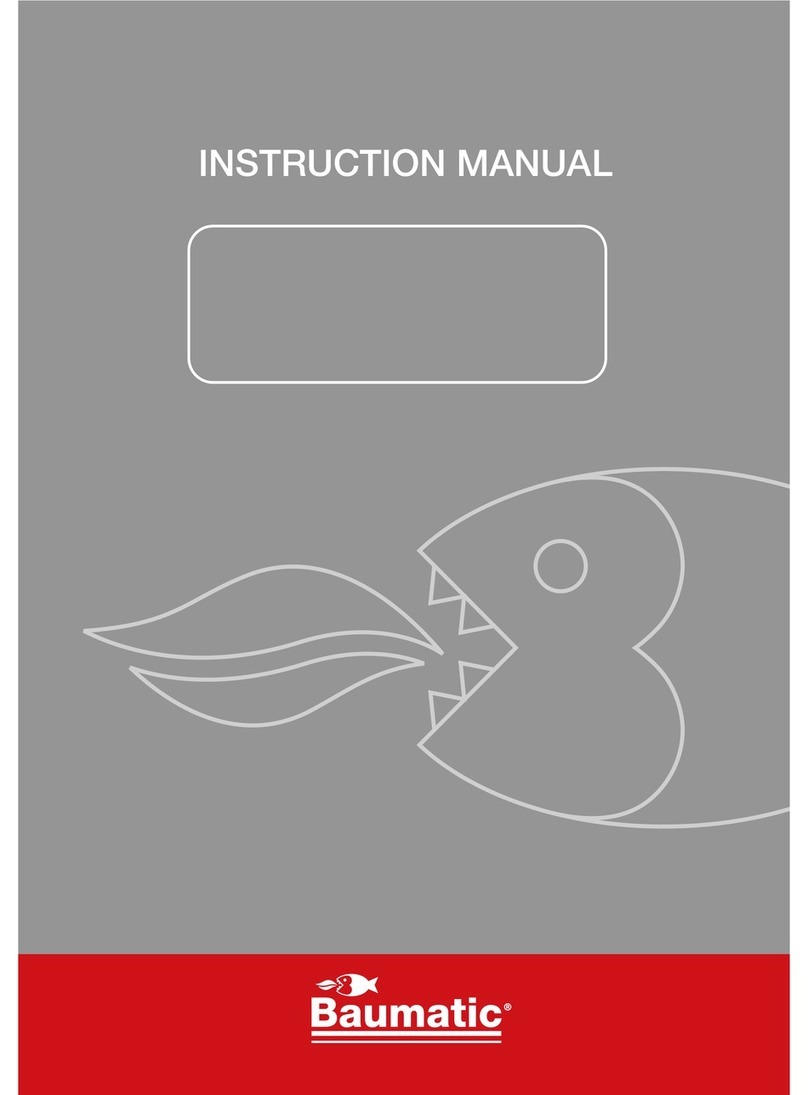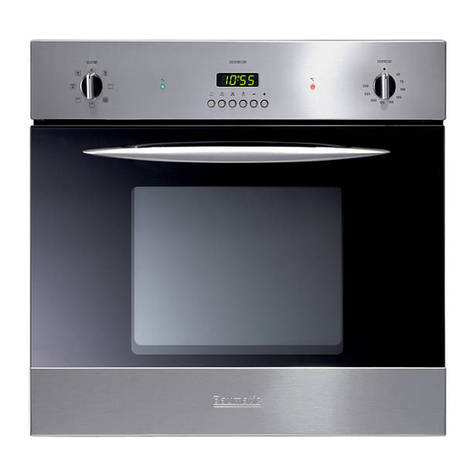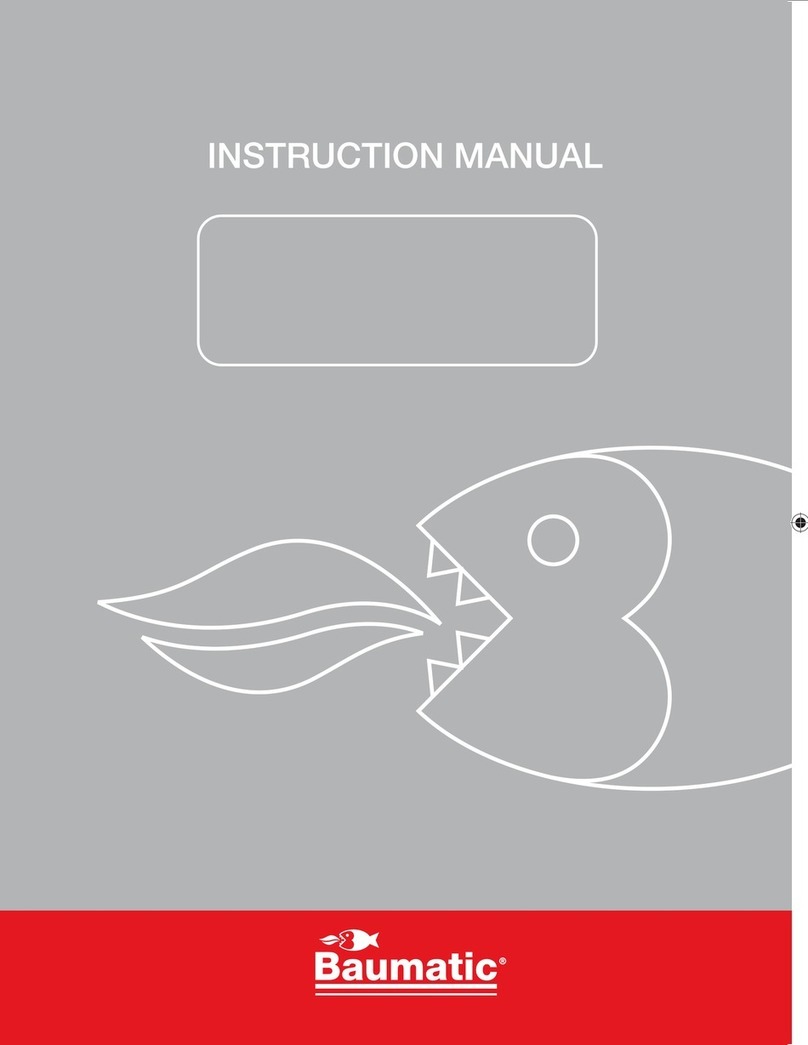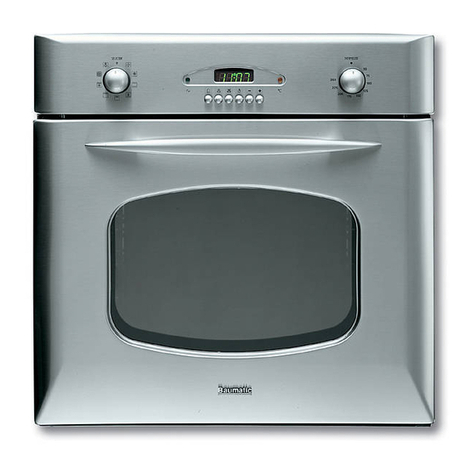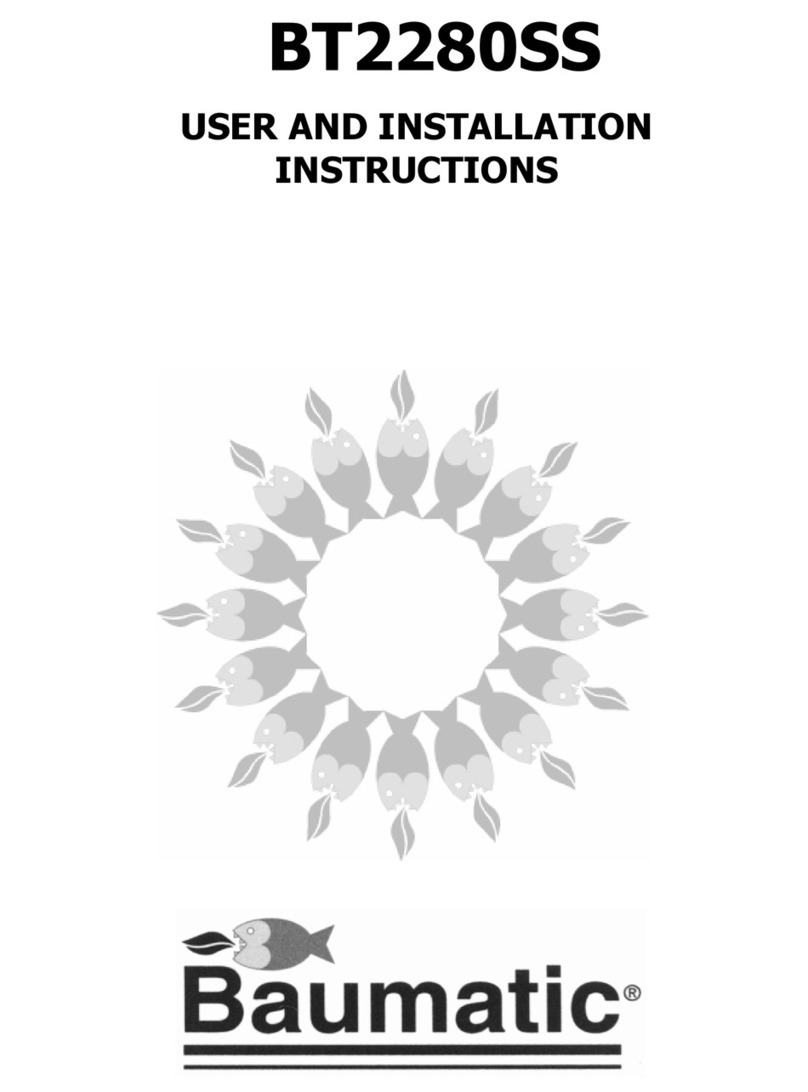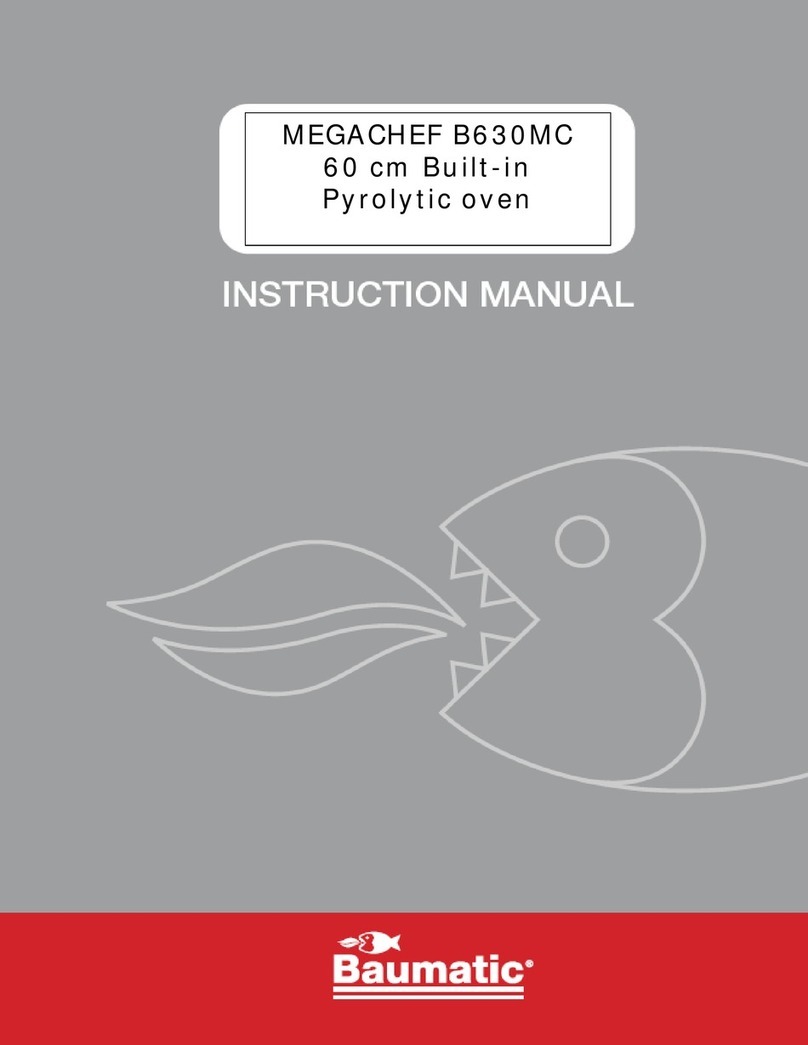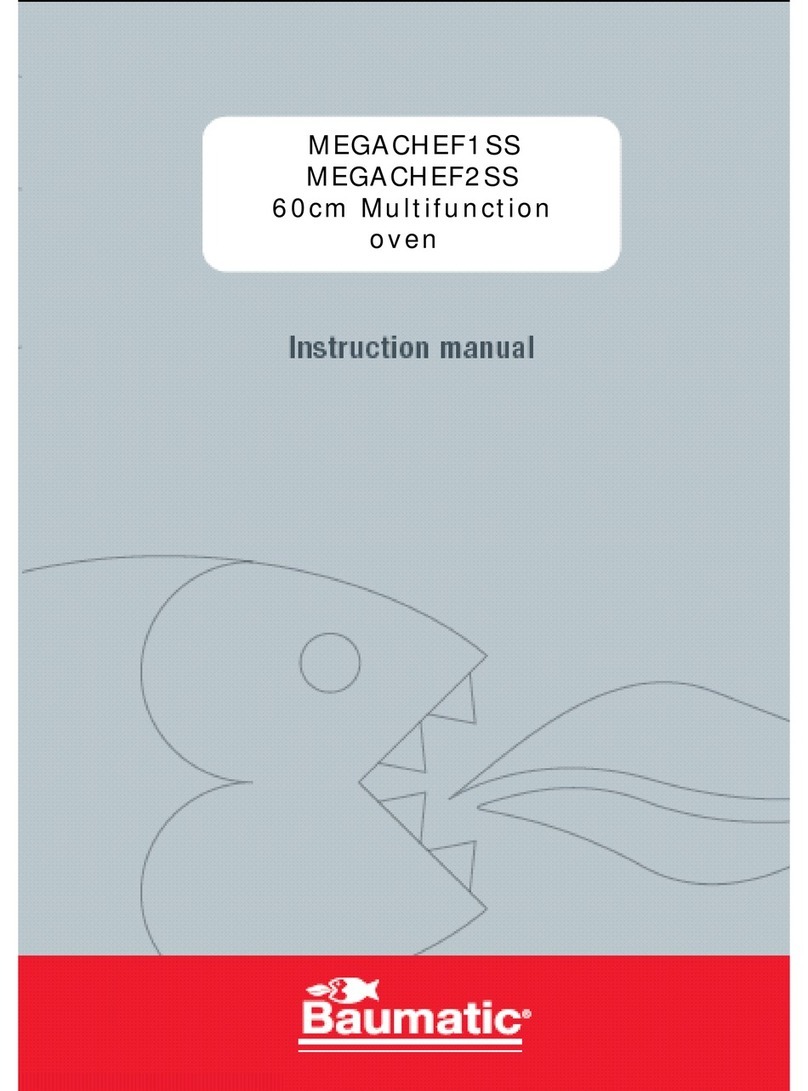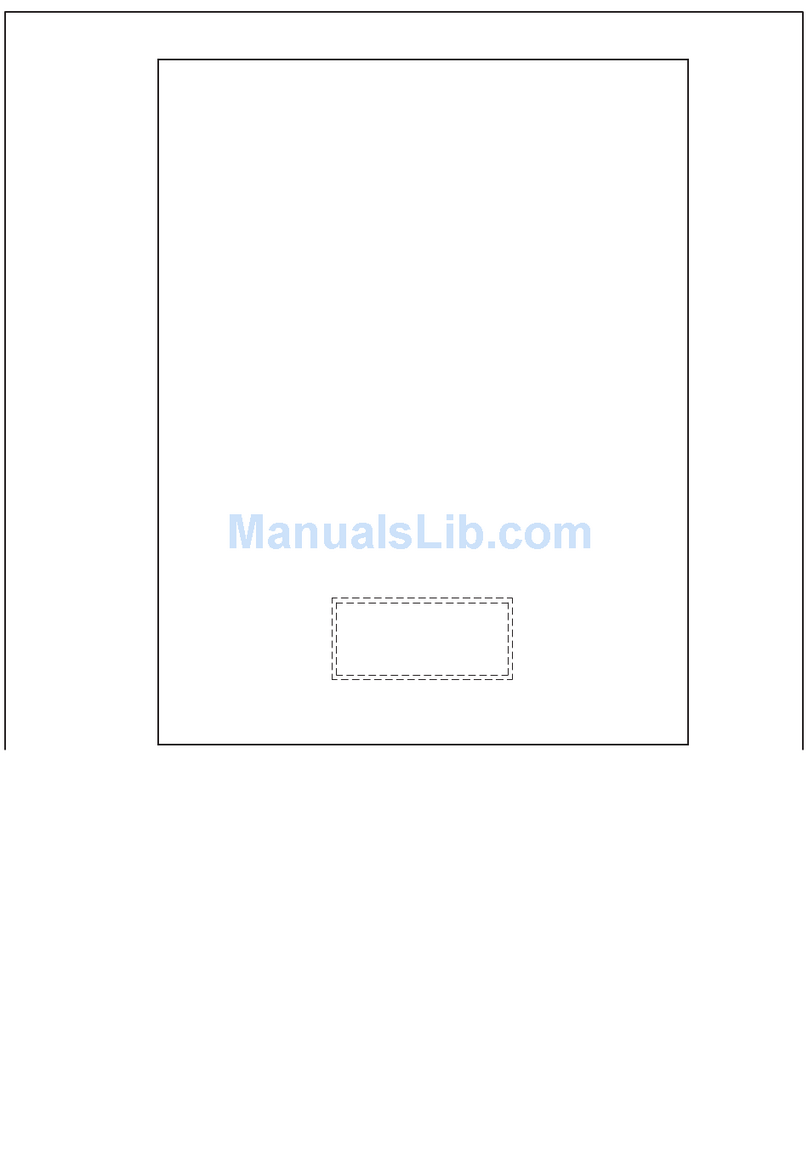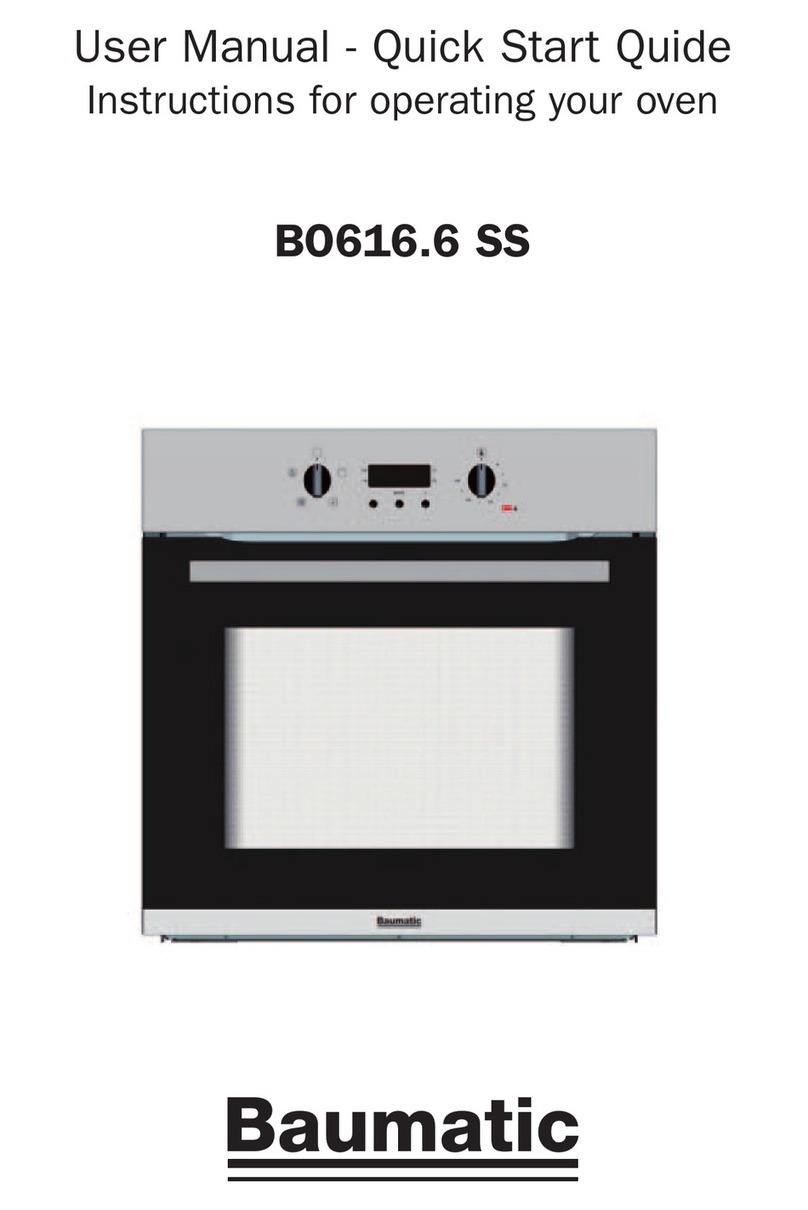5
Before First Use
There may be traces of grease and other substances
in the oven as a result of its manufacturing process. These
should be removed by means of the following procedure:
• Remove all of the packaging from your oven, including
the protective plastic, if any.
• Turn the oven to setting , or else place it on
the defect settingt , at 200ºC, for 1 hour.
• Cool the oven with the door open so that it ventilates
and no odours remain inside it.
• Once cold, clean the oven and accessories. During this
first operation, smoke and smells will be produced. The
kitchen should therefore be well ventilated.
Environmentally Friendly Packaging
The packaging is made from totally recyclable materials
which can be put to other uses. Consult your local council
regarding the necessary procedures for disposing of
these materials.
CAUTION
The symbol on the product or packaging indicates that
this appliance cannot be disposed of as normal household
waste. It should be taken to an electrical and electronic
equipment collection point for recycling. In this way, any
negative consequences for the environment and public
health from incorrect handling can be avoided. Contact
your local council, household waste disposal service or
the establishment you bought the product from for more
information on recycling the appliance.
Other important instructions
• The oven must always be operated with the door
closed.
• The manufacturer takes no responsibility for any use of
the oven other than for the home preparation of food.
• Do not store oil, fats or inflammable materials inside the
oven. This may be dangerous if the oven is turned on.
• Do not lean or sit on the open oven door. You could
damage it, as well as endanger your own safety.
• Do not cover the bottom of the oven with aluminium foil
as this may affect cooking performance and damage
the enamel inside the oven and the interior of your
kitchen unit.
• To cook any food, insert the tray or grill in the side rails
in the oven.
• Do not place containers or food on the bottom surface
of the oven. Always use the trays and grill.
• Do not pour water on the bottom surface of the oven
when in use; this may damage the enamel.
• Open the oven door as little as possible during cooking.
This will reduce power consumption.
• It is normal for condensation to occur on the oven door
when cooking dishes with a high liquid content.
• Clean the oven interior to remove traces of grease or
food, which could later give off smoke and odours and
cause stains to appear.
Cleaning and Maintenance
Caution:
Disconnect the appliance from mains power supply before
any operation.
Cleaning the Oven Interior
Easy to clean enamel ovens Use nylon brushes or sponges
with warm soapy water to clean enamelled surfaces such
as the bottom of the oven. Clean when the oven is cold.
Use oven cleaning products only on enamelled surfaces
and always follow the manufacturer’s instructions.
Caution
Do not clean the oven interior with a steam cleaner or
pressurised water cleaning equipment. Do not use metal
scouring pads, wire brushes or any utensil that can scratch
the enamel.
Other oven models have a catalytic (self-cleaning)
cleaning system. This system removes small traces of
grease while cooking at high temperatures.
Use of Fold-down Grill (depending on Model)
To clean the top part of the oven:
• Wait until the oven is cold.
• Turn the screw (A) and lower the grill ele-ment as far
as possible. Figure 1
• In other oven models, push the rod of the grill element
(B) with both hands until it is released from the upper
fastening point. Figure 2
• Turn the element round and clean the upper part of
the oven.
• Finally, return the grill element to its original position.
Cleaning the Catalytic Panels
If the remains of food on the enamel cannot be cleaned
off using normal (self-cleaning) methods, then:
1 Dismantle the panels and leave them to soak long
enough to soften the remains.
2 Clean the panels with a sponge and clean water.
3 Dry the panels and mount them in the oven again.
4 Connect the oven for an hour at 200 ºC.
Caution
Do not use commercial cleaning products or abrasive
powder cleansers on the surface of the catalytic panels.
Instructions for Dismantling the Flat Catalytic Panels and
their Supports.
1 Remove all accessories from inside the oven.
2 Pull on the supports (C), releasing them from the nut
(D). Figure 3
3 Unscrew the nut (D) to release the flat catalytic panels.
Figure 4
4 To dismantle the panel at the back, remove the screw
(E). Figure 5
5 To assemble, proceed in reverse order.
++Caution
For your own safety, never turn the oven on with-out the
rear panel in position since this protects the fan.
